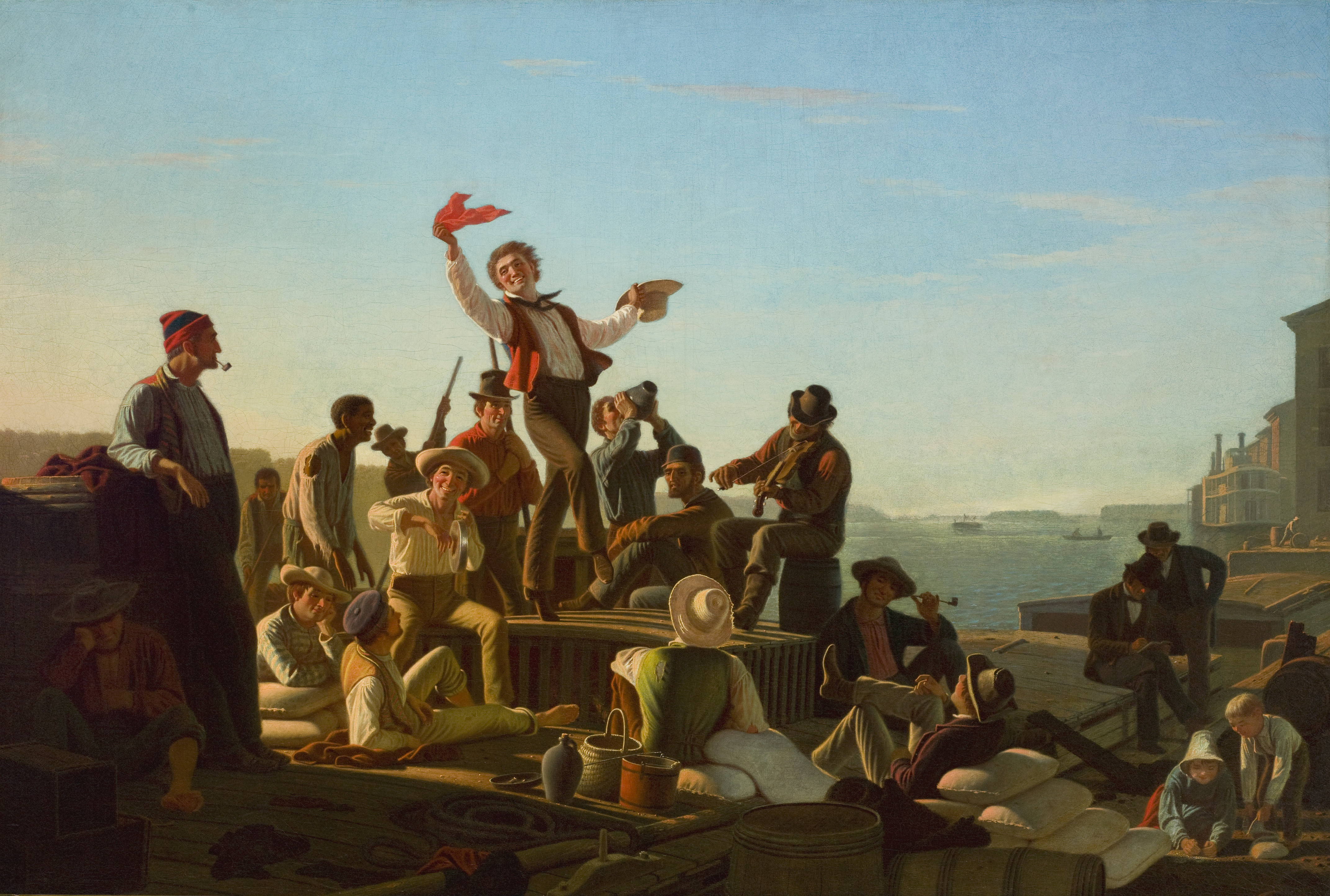|
Flat Boat
A flatboat (or broadhorn) was a rectangular flat-bottomed boat with square ends used to transport freight and passengers on inland waterways in the United States. The flatboat could be any size, but essentially it was a large, sturdy tub with a hull. A flatboat was almost always a one-way (downstream) vessel, and was usually dismantled for lumber when it reached its destination. Early history The flatboat trade first began in 1781, with Pennsylvania farmer Jacob Yoder building the first flatboat at Old Redstone Fort on the Monongahela River. Yoder's ancestors immigrated from Switzerland, where small barges called weidlings are still common today, having been used for hundreds of years to transport goods downriver. Yoder shipped flour down the Ohio River and Mississippi River to the port of New Orleans. Other flatboats would follow this model, using the current of the river to propel them to New Orleans where their final product could be shipped overseas. Through the an ... [...More Info...] [...Related Items...] OR: [Wikipedia] [Google] [Baidu] |
Keelboat And Flatboat
A keelboat is a riverine cargo-capable working boat, or a small- to mid-sized recreational sailing yacht. The boats in the first category have shallow structural keels, and are nearly flat-bottomed and often used leeboards if forced in open water, while modern recreational keelboats have prominent fixed fin keels, and considerable draft. The two terms may draw from cognate words with different final meaning. A keep boat, keelboat, or keel-boat is a type of usually long, narrow cigar-shaped riverboat, or unsheltered water barge which is sometimes also called a poleboat—that is built about a slight keel and is designed as a boat built for the navigation of rivers, shallow lakes, and sometimes canals that were commonly used in America including use in great numbers by settlers making their way west in the century-plus of wide-open western American frontiers. They were also used extensively for transporting cargo to market, and for exploration and trading expeditions, for wat ... [...More Info...] [...Related Items...] OR: [Wikipedia] [Google] [Baidu] |
Antebellum Era
In the history of the Southern United States, the Antebellum Period (from la, ante bellum, lit= before the war) spanned the end of the War of 1812 to the start of the American Civil War in 1861. The Antebellum South was characterized by the use of slavery and the culture it fostered. As the era proceeded, Southern intellectuals and leaders gradually shifted from portraying slavery as an embarrassing and temporary system, to a full-on defense of slavery as a positive good, and harshly criticized the budding abolitionist movement. The economy was largely plantation based, and dependent on exports. Society was stratified, inegalitarian, and perceived by immigrants as lacking in opportunities. Consequently the manufacturing base lagged behind the non-slave states. Wealth inequality grew as the larger landholders took the greater share of the profits generated by slaves, which also helped to entrench their power as a political class. As the country expanded westward, slaver ... [...More Info...] [...Related Items...] OR: [Wikipedia] [Google] [Baidu] |
Galiot
A galiot, galliot or galiote, was a small galley boat propelled by sail or oars. There are three different types of naval galiots that sailed on different seas. A ''galiote'' was a type of French flat-bottom river boat or barge and also a flat-bottomed boat with a simple sail for transporting wine. Naval vessels * Mediterranean, (16th–17th centuries) : Historically, a galiot was a type of ship with oars, also known as a half-galley, then, from the 17th century forward, a ship with sails and oars. As used by the Barbary pirates against the Republic of Venice, a galiot had two masts and about 16 pairs of oars. Warships of the type typically carried between two and ten cannons of small caliber, and between 50 and 150 men. It was a Barbary galiot, captained by Barbarossa I, that captured two Papal vessels in 1504. * North Sea (17th–19th centuries) : A galiot was a type of Dutch or German merchant ship of 20 to 400 tons ( bm), similar to a ketch, with a rounded fore and aft like ... [...More Info...] [...Related Items...] OR: [Wikipedia] [Google] [Baidu] |


